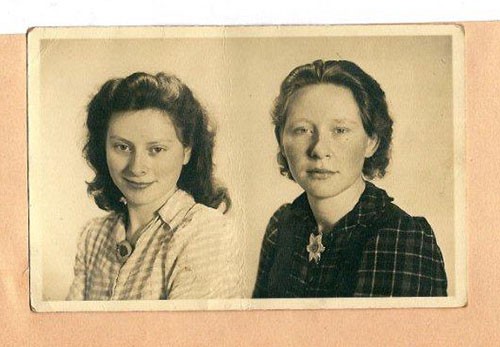The Sisters Who Fought Nazis By Seducing Them

They were only teens when they joined the fight against Nazi occupation.
Our Unsung Heroes series brings history’s unknown badasses out of the footnotes and into the spotlight.
Rumor has it Emilia Clarke of “Game of Thrones” fame has signed on to star as Dutch Resistance fighter Hannie Schaft in an upcoming remake of the 1981 film “The Girl With the Red Hair.”
Hannie was only in her early 20s when she left law school to join the fight against Nazi occupation. She was arrested on March 21st, 1945, just as World War II was ending.
Of 422 Resistance members, she was the only woman executed. According to lore, during the execution a guard’s bullet missed her; she taunted him, boasting, “I’m a better shot.” These were her last words, spoken at the age of 24.
Before her death, Hannie was a member of one of the most famous Dutch Resistance cells, which included five men and three women. The other two women were teenage sisters named Truus and Freddie Oversteegen. Despite their young age, the sisters conspired with their fellow fighters to help end the occupation by any means necessary — even if it meant seducing the enemy.

All in the family
When the Resistance first approached the sisters, Truus was 16 and Freddie only 14. It was not their first time doing battle with the Nazis. The girls grew up in a heavily Communist area north of Amsterdam; their parents were very involved with International Red Aid, a Communist organization that helped those fleeing the Nazis cross illegally from Germany into the Netherlands.
The Oversteegen family frequently hid Jewish refugees inside their home and Truus and Freddie distributed leaflets and illegal, underground newspapers.
Flirting with danger
In February 1941, Dutch Communists and radical socialists banded together to lead a strike protesting the deportations of young Jewish men. The strike was one of the few successful acts of protest against the Nazis and resulted in thousands of Dutch factory workers walking out.
The Nazis responded in kind, brutally repressing the Dutch and making joining the Resistance even more dangerous. It was right around this time that the Oversteegen sisters were approached by the Resistance, asking them to join. They were the first women to participate in their cell, as Hannie was still attending school at the time.
Viva la Resistance
The cell the Oversteegens joined worked to destroy railway lines, save Jewish children — and kill Nazis. As Freddie told Vice in May 2016, Truus would approach Nazi collaborators in bars, seduce them and take them back to the woods, where the Resistance would shoot them. Freddie acted as a lookout to make sure no one interrupted.
In Vice, Freddie describes the procedure, saying:
“[Truus] was like: ‘Want to go for a stroll?’ And of course he wanted to. Then they ran into someone — which was made to seem a coincidence, but he was one of ours — and that friend said to Truus: ‘Girl, you know you’re not supposed to be here.’ They apologised, turned around, and walked away. And then shots were fired, so that man never knew what hit him. They had already dug the hole, but we weren’t allowed to be there for that part.”
Truus Oversteegen passed away on Saturday, July 2nd, 2016 at the age of 92. She was 90 years old before the Dutch state formally recognized her role as a Resistance fighter. After the war, she got married, had kids and worked as a sculptress and public speaker. Both she and her sister are the subjects of a Dutch TV documentary titled “Two Sisters in the Resistance.”
Freddie Oversteegen is currently 90 and living in the Netherlands. She enjoys playing Scrabble and spending time with her children. Although she’s received the least attention of the three women in the Resistance cell, she is honored by the country every year on May 4th, the Dutch day of remembrance.
